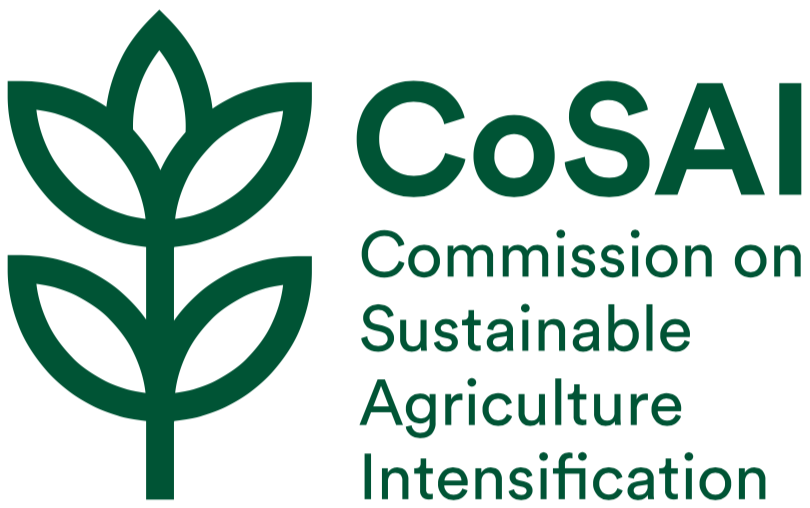Résultats de la recherche
Displaying 1 - 10 of 21 results.
Facilitating Agricultural Innovation Systems: A critical realist approach
The turn of agrarian sciences and agricultural extension from reductionist and transfer of technology, respectively, towards systemic approaches has transformed agricultural/rural development thinking in the last decades. Nevertheless, the emergence of Agricultural Innovation Systems (AIS) has to confront a number of gaps among which the expert – lay knowledge gap is of major importance. This paper aims at exploring such a gap as well as obstacles to participatory development from a critical realist point of view.
Sujet(s):
Année de publication:
2012Exploring the emerging facilitation and brokerage roles in agricultural extension education
The purpose of this piece of work is to investigate, through a literature review, the role of intermediaries in agricultural extension and rural development. In the first place, a general view of the roles of intermediaries, as depicted in literature, is presented. Then, one of the main types of intermediaries, facilitators is outlined based on a comprehensive review of the literature, particularly in the healthcare sector.
Sujet(s):
Année de publication:
2012Stimulating Innovations: Building Bridges And Generating Spaces
This paper, presented at the 12th European IFSA Symposium (Workshop: "Generating spaces for innovation in agricultural and rural development") in 2016, aims to summarise the main features of the AgriSpin project. The project is being financed by the Horizon 2020 research program of the European Commission aiming at contributing to system-oriented innovation research in agriculture and as complementary to the policy instrument EIP AGRI. The idea behind EIP AGRI is that innovation emerges from interaction between stakeholders.
Sujet(s):
courtagerenforcement des capacités (RC)facilitationsystèmes d'innovationinnovationsystèmes de connaissances et d'informationapprentissageréseauapproches participativespolitiquesrecherchedéveloppement ruralchaînes de valeur...
Année de publication:
2016Reorienting funding for research and innovation is an urgent step to transform agri-food systems
Sujet(s):
Année de publication:
2021Mining the gaps: Using machine learning to map 1.2 million agri-food publications from the Global South
The evidence base on agri-food systems is growing exponentially. The CoSAI-commissioned study, Mining the Gaps, applied artificial intelligence to mine more than 1.2 million publications for data, creating a clearer picture of what research has been conducted on small-scale farming and post-production systems from 2000 to the present, and where evidence gaps exist.
Sujet(s):
Année de publication:
2021Better instruments and approaches are needed to transform agri-food systems research and innovation
A range of approaches and financial instruments have been used to stimulate and support innovation in agriculture and resolve interlocking constraints for uptake at scale. These include innovation platforms, results-based payments, value chain approaches, grants and prizes, incubators, participatory work with farmer networks, and many more.
Sujet(s):
Année de publication:
2021Learning from agri-food innovation pathways in Brazil, India and Kenya
Innovation for sustainable agricultural intensification (SAI) is challenging. Changing agricultural systems at scale normally means working with partners at different levels to make changes in policies and social institutions, along with technical practices. This study extracts lessons for practitioners and investors in innovation in SAI, based on concrete examples, to guide future investment.
Sujet(s):
Année de publication:
2022Eight research and innovation principles for sustainable and equitable agri-food systems
A huge increase in investment in innovation for agricultural systems is critical to meet the Sustainable Development Goals and Paris Climate Agreement. Most of this increase needs to come from reorienting existing funding for innovation. However, understanding whether an investment will fully promote environmentally sustainable and equitable agri-food systems can be difficult.
Sujet(s):
Année de publication:
2022Innovation in farm reward mechanisms is pivotal for transforming agriculture to protect and restore nature in the Global South
Finance is a key lever for turning agriculture from a potential source of environmental harm and social inequity to a driver of conservation and social inclusiveness. Private and public sector funding for farmers to combat climate change and protect and restore nature (‘Paying for Nature’) is rapidly increasing. Yet this new funding may not reach its aims without drastically improving farm-level reward mechanisms.
Sujet(s):
Année de publication:
2022Pages
Sorting block
Filtrer par idiome
Filtrer par sujet(s)
- brokering (2) Apply brokering filter brokering
- capacity development (CD) (4) Apply capacity development (CD) filter capacity development (CD)
- climate change (1) Apply climate change filter climate change
- communication (1) Apply communication filter communication
- education (2) Apply education filter education
- extension (3) Apply extension filter extension
- facilitation (4) Apply facilitation filter facilitation
- food and nutrition security (1) Apply food and nutrition security filter food and nutrition security
- innovation systems (15) Apply innovation systems filter innovation systems
- knowledge and information systems (4) Apply knowledge and information systems filter knowledge and information systems
- learning (7) Apply learning filter learning
- networks (2) Apply networks filter networks
- participatory approaches (2) Apply participatory approaches filter participatory approaches
- policies (3) Apply policies filter policies
- research (6) Apply research filter research
- rural development (1) Apply rural development filter rural development
- sustainable agriculture (6) Apply sustainable agriculture filter sustainable agriculture
- value chains (1) Apply value chains filter value chains
Filtrer par auteur(s)
- (-) Remove Commission on Sustainable Agriculture Intensification (CoSAI) filter Commission on Sustainable Agriculture Intensification (CoSAI)Commission on Sustainable Agriculture Intensification (CoSAI)
- Adekunle A. A. (9) Apply Adekunle A. A. filter Adekunle A. A.
- Agrinatura (43) Apply Agrinatura filter Agrinatura
- Aguilar-Ávila J. (10) Apply Aguilar-Ávila J. filter Aguilar-Ávila J.
- Asia-Pacific Islands Rural Advisory Services Network (APIRAS) (12) Apply Asia-Pacific Islands Rural Advisory Services Network (APIRAS) filter Asia-Pacific Islands Rural Advisory Services Network (APIRAS)
- CDAIS project (98) Apply CDAIS project filter CDAIS project
- Chia E. (10) Apply Chia E. filter Chia E.
- Devaux A. (10) Apply Devaux A. filter Devaux A.
- Dhehibi B. (11) Apply Dhehibi B. filter Dhehibi B.
- Dror I. (24) Apply Dror I. filter Dror I.
- Fatunbi O. (15) Apply Fatunbi O. filter Fatunbi O.
- Faure G. (10) Apply Faure G. filter Faure G.
- Food and Agriculture Organization of the United Nations (12) Apply Food and Agriculture Organization of the United Nations filter Food and Agriculture Organization of the United Nations
- Food and Agriculture Organization of the United Nations (17) Apply Food and Agriculture Organization of the United Nations filter Food and Agriculture Organization of the United Nations
- Food and Agriculture Organization of the United Nations (FAO) (142) Apply Food and Agriculture Organization of the United Nations (FAO) filter Food and Agriculture Organization of the United Nations (FAO)
- Food and Agriculture Organization of the United Nations ( FAO ) (81) Apply Food and Agriculture Organization of the United Nations ( FAO ) filter Food and Agriculture Organization of the United Nations ( FAO )
- Hall, A. (24) Apply Hall, A. filter Hall, A.
- Hall A. (12) Apply Hall A. filter Hall A.
- Hoekstra D. (11) Apply Hoekstra D. filter Hoekstra D.
- IICA (48) Apply IICA filter IICA
- International Fund for Agricultural Development (18) Apply International Fund for Agricultural Development filter International Fund for Agricultural Development
- International Fund for Agricultural Development (IFAD) (13) Apply International Fund for Agricultural Development (IFAD) filter International Fund for Agricultural Development (IFAD)
- International Livestock Research Institute (10) Apply International Livestock Research Institute filter International Livestock Research Institute
- Klerkx L. (47) Apply Klerkx L. filter Klerkx L.
- Klerkx, L. (25) Apply Klerkx, L. filter Klerkx, L.
- Landini, F. (11) Apply Landini, F. filter Landini, F.
- Latin American Network for Rural Extension Services (RELASER) (14) Apply Latin American Network for Rural Extension Services (RELASER) filter Latin American Network for Rural Extension Services (RELASER)
- Leeuwis C. (16) Apply Leeuwis C. filter Leeuwis C.
- Leeuwis, C. (15) Apply Leeuwis, C. filter Leeuwis, C.
- Lundy M. (18) Apply Lundy M. filter Lundy M.
- Nichterlein K. (9) Apply Nichterlein K. filter Nichterlein K.
- Ojijo N.K.O. (13) Apply Ojijo N.K.O. filter Ojijo N.K.O.
- Organisation for Economic Co-operation and Development (12) Apply Organisation for Economic Co-operation and Development filter Organisation for Economic Co-operation and Development
- Qaim M. (58) Apply Qaim M. filter Qaim M.
- Rendon-Medel R. (11) Apply Rendon-Medel R. filter Rendon-Medel R.
- Sartas M. (16) Apply Sartas M. filter Sartas M.
- Schut, M. (10) Apply Schut, M. filter Schut, M.
- Schut M. (44) Apply Schut M. filter Schut M.
- Sulaiman, R. V. (19) Apply Sulaiman, R. V. filter Sulaiman, R. V.
- Sulaiman R. V. (11) Apply Sulaiman R. V. filter Sulaiman R. V.
- TAP Secretariat (26) Apply TAP Secretariat filter TAP Secretariat
- Temple L. (14) Apply Temple L. filter Temple L.
- The World Bank (13) Apply The World Bank filter The World Bank
- Triomphe B. (9) Apply Triomphe B. filter Triomphe B.
- Tropical Agriculture Platform (TAP) (43) Apply Tropical Agriculture Platform (TAP) filter Tropical Agriculture Platform (TAP)
- University of Evora (13) Apply University of Evora filter University of Evora
- various authors (44) Apply various authors filter various authors
- Velasco C. (9) Apply Velasco C. filter Velasco C.
- World Bank (61) Apply World Bank filter World Bank
- World Bank Group (18) Apply World Bank Group filter World Bank Group
Filtrer par pays
- Greece (2) Apply Greece filter Greece
- India (2) Apply India filter India
- Kenya (2) Apply Kenya filter Kenya
- Brasil (1) Apply Brasil filter Brasil
- Brazil (1) Apply Brazil filter Brazil
- Colombia (1) Apply Colombia filter Colombia
- Nigeria (1) Apply Nigeria filter Nigeria
- Sri Lanka (1) Apply Sri Lanka filter Sri Lanka
Filtrer par éditeur(s)
- Commission on Sustainable Agriculture Intensification (17) Apply Commission on Sustainable Agriculture Intensification filter Commission on Sustainable Agriculture Intensification
- International Farming Systems Association (2) Apply International Farming Systems Association filter International Farming Systems Association
- AgEcon Search (1) Apply AgEcon Search filter AgEcon Search
- Agricultural University of Athens (1) Apply Agricultural University of Athens filter Agricultural University of Athens
- Foreign, Commonwealth & Development Office (1) Apply Foreign, Commonwealth & Development Office filter Foreign, Commonwealth & Development Office
- International Food Policy Research Institute (1) Apply International Food Policy Research Institute filter International Food Policy Research Institute




